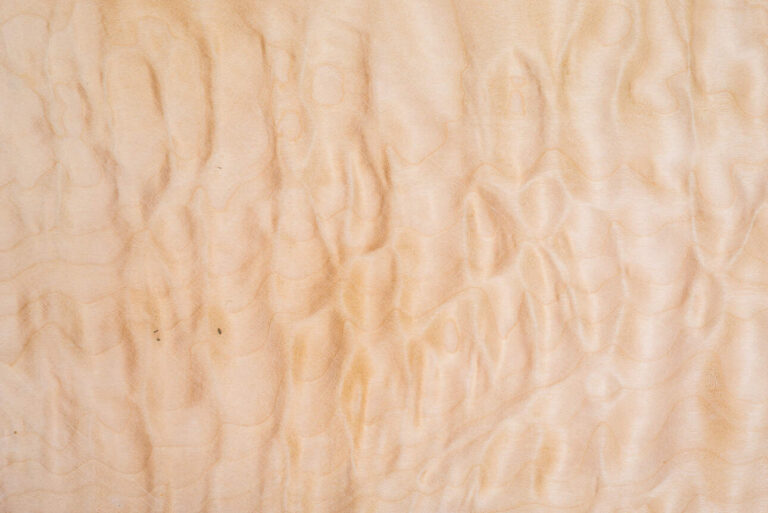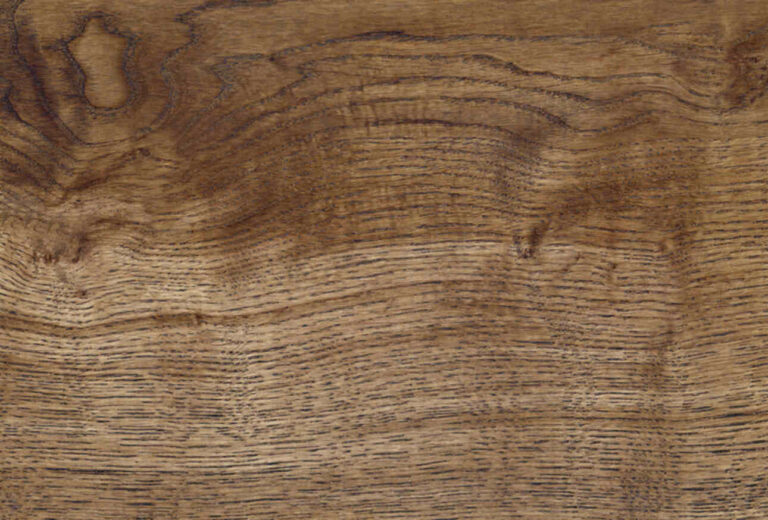What Is a Bookmatched Electric Guitar Body?

In electric guitars, ‘bookmatched’ means two pieces of wood joined at the edge. They mirror each other like an open book. It looks good, and it enhances the body’s acoustic properties. Bookmatched tops are a mark of beauty, often on pricier instruments. The process is careful: pick, cut, and match the wood grains for a mirror effect that shows fine craft.
Still unsure how to tell a bookmatched top from a non-bookmatched guitar top? Take a closer look at the picture at the top of this article.
See the fine line down the center of the body? And how the quilted pattern on each side of the maple top mirrors the other? That’s the effect of a book matched top.
Read on to learn about this intricate luthier’s process!
Key Takeaways
- Bookmatching is a woodwork method for symmetry on guitar bodies;
- It creates a mirror image, often on tops of high-end electric guitars;
- It showcases the wood’s grain, adding to the guitar’s unique look and sound.
What Is a Bookmatched Guitar Body?
When you spot a stunning pattern on a guitar, it might be bookmatched. This is where wood is split and opened like a book to mirror itself.
Why care about this for your guitar?
Here’s why:
- Aesthetic Appeal: Grain patterns mirror each other. They offer beauty unmatched by a single piece of wood;
- Unique Characteristics: Every bookmatched piece is unique, with its distinct grain;
- Vibrational Matching: For acoustics, the symmetry can mean a balanced sound as both halves vibrate together;
- Tonal Quality: Some say it leads to a more even tone, though opinions vary.
When you spot a stunning pattern
on a guitar,
it might be bookmatched
Bookmatching isn’t just for acoustics; electrics also gain visual charm. Choosing a book-matched top is both a style choice and a mark of quality.
Here’s the bookmatching process:
- Saw a thick wood piece in half;
- Open and join the halves at the seam (they’re glued together);
- The pattern that emerges is symmetrical, like butterfly wings.
Knowing about bookmatching adds depth to your appreciation of guitar craftsmanship. It’s a sign of the luthier’s commitment to beauty and sound.
Understanding Bookmatched Electric Guitar Bodies
The Art of Bookmatching
Due to bookmatching, the grain pattern becomes symmetrical. On electric guitars, it is used for the cap or top, the top wood layer on the body. Bookmatched tops catch the eye, and help vibrations spread evenly across the guitar.
- Symmetry: Mirrors the wood grain;
- Aesthetics: Boosts visual appeal with wood’s natural patterns;
- Resonance: May enhance vibrational transfer, enriching tone.
Electric vs Acoustic Guitar Bodies
Electric and acoustic guitars can feature bookmatched bodies for different reasons. For electrics, bookmatching is about looks. Their solid bodies don’t affect sound much; pickups do that job. But in acoustics, where the wood resonates and projects sound, bookmatching can touch the tone.
- Electric Guitar: Boosts looks, barely touches sound;
- Acoustic Guitar: Boosts looks and can influence tone with natural sound.
Bookmatching marries art and function, enhancing the look and sound of guitars. Whether acoustic or electric, the wood match on your guitar’s body is a unique beauty.
Dimensions and Tolerances in Body Construction
The precision of a bookmatched body’s thickness and size is vital. Your guitar’s body is built to exact measurements for the best sound. Fitting must be exact; minor errors can change the sound or strength. The wood’s size and grain direction are picked for a consistent, quality guitar.
Customization and Personalization
Making your electric guitar or bass unique is all about customization. A custom shop lets you tweak your guitar body to match your style and how you play.
Custom Shop Options
Custom shops offer choices to make your electric guitar unique. Here’s what you can change:
- Body Style: Pick from classic to cutting-edge shapes;
- Wood Type: Choose woods like mahogany, alder, or maple for their sound;
- Finish: Opt for your color and a matte, gloss, or satin look;
- Hardware: Select bridges, tuners, and knobs that suit you;
- Electronics: Customize pickups and wiring for your desired sound.
Frequently Asked Questions
Why use exotic woods for bookmatching?
Exotic woods have striking grain patterns that are bookmatching highlights. They’re chosen for their beauty in guitar bodies.
What does a luthier do in bookmatching?
A luthier selects, cuts, and carefully joins wood to make a bookmatched guitar body.
What tonewoods are common for bookmatching?
Popular tonewoods for bookmatching are rosewood, cedar, and ebony. Guitar builders and luthiers use them for their grain patterns and sound.
Why does bookmatching matter for quality?
Bookmatching keeps grain pattern and color consistent. It makes the guitar look unified and high-quality.
Can bookmatching change the sound of an electric guitar?
Mainly aesthetic, bookmatching might subtly affect an electric guitar’s resonance and tone.






